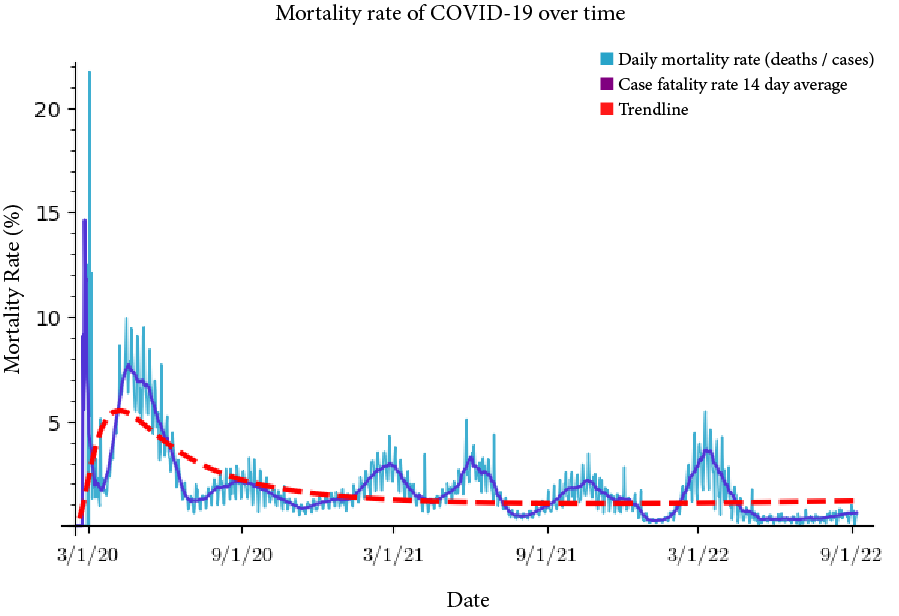On Aug. 31, the FDA approved updated booster shots in an effort to mitigate threats posed by new Omicron variants. Despite this, many Americans aren’t scheduling their boosters and seem to have dismissed COVID-19 as no longer a threat.
This past summer was filled with travel and social get-togethers — after two years of COVID-19 uncertainty, many people decided to leave the country, attend sporting events and even go to crowded concerts and rallies. In truth, the threats from COVID-19 are far from over as much as we wish it were. Immunity from both vaccination and past exposure continues to decrease, and new COVID-19 variants will continue to appear, throwing uncertainty into whether the established systems of protection against the virus are sustainable.
When it comes to preventing the spread of the virus, the CDC has decided to not pursue a policy of complete containment of the spread of the virus, shortening the isolation times for those who test positive to five days and lifting the requirement of self-isolation for those exposed to the virus, despite the steady daily cases. As such, the U.S. is heading toward a future in which the disease becomes endemic, turning into a recurrent seasonal phenomenon like the flu.
This decision by the CDC is sensible: It is very difficult to completely stop the transmission of highly virulent diseases like COVID-19. Zero-COVID policies like the one currently in place in China significantly stunt economic growth, something undesirable for Western capitalist countries like the U.S.
Since the beginning of the pandemic, over 14 variants of COVID-19 have been discovered — the most recent being the Omicron BA.5 variant. As such, the threat of a new and possibly stronger variant of COVID-19 still largely exists. Just because the current variants are less dangerous than some of the original ones does not mean the world is safe.
To contrast, look at the flu. Estimates of COVID-19’s mutation rate vary wildly but generally lie in the range between 0.0005 and 0.002 nucleotide substitutions per site per year, comparable to the 0.0005 and 0.0026 average of Influenza A and B. Nevertheless, COVID-19 remains more than 10 times as deadly, with the biweekly case fatality rate, the ratio between deaths and cases, fluctuating between 0.5% and 1%, and the case fatality rate of the flu being around 0.06%.
Thus, these seasonal outbreaks are far less lethal than COVID-19. In fact, experts predict that even if the pandemic terminates by the end of 2022, it will likely still take another year for the mortality rate to be comparable to the flu.
Before that time, though, it is necessary to remain cautious, especially as our immunity begins to wear off. Recent studies have also shown that a COVID-19 vaccination shot is only highly effective for about three months after it is administered. Despite this, only 69% of people who have been vaccinated in Santa Clara County have received their first booster shot, compared to an 87% vaccination rate for the first and second doses. Only 60% of the Santa Clara County population is protected from the current Omicron variants of COVID. As new variants appear and immunity wears off, this number will continue to drop.
So what should be done in order to continue minimizing the risk of COVID? For starters, it’s important to limit the number of “heavy-contact” social gatherings. Yes, we are at the point in the pandemic where social gatherings are generally safe and allowed, but with the current vaccination rate and the possibility of stronger COVID-19 variants, superspreader events such as social gatherings are one of the largest reasons for an increase.
In addition, it is vital that the unvaccinated get vaccinated and continue receiving booster shots in order to keep our immunity high. Booster shots need to be advertised on a larger scale — pharmaceutical companies and local health offices have the power to encourage these booster shots and should do so. Vaccination programs should be carried on with continuous support instead of letting their funding dry up. We cannot be apathetic and let a preventable wave or variant arise.
At this point, the threat of the virus is steadily decreasing. Let’s do the best we can to ensure that this threat dies down as soon as possible.


























